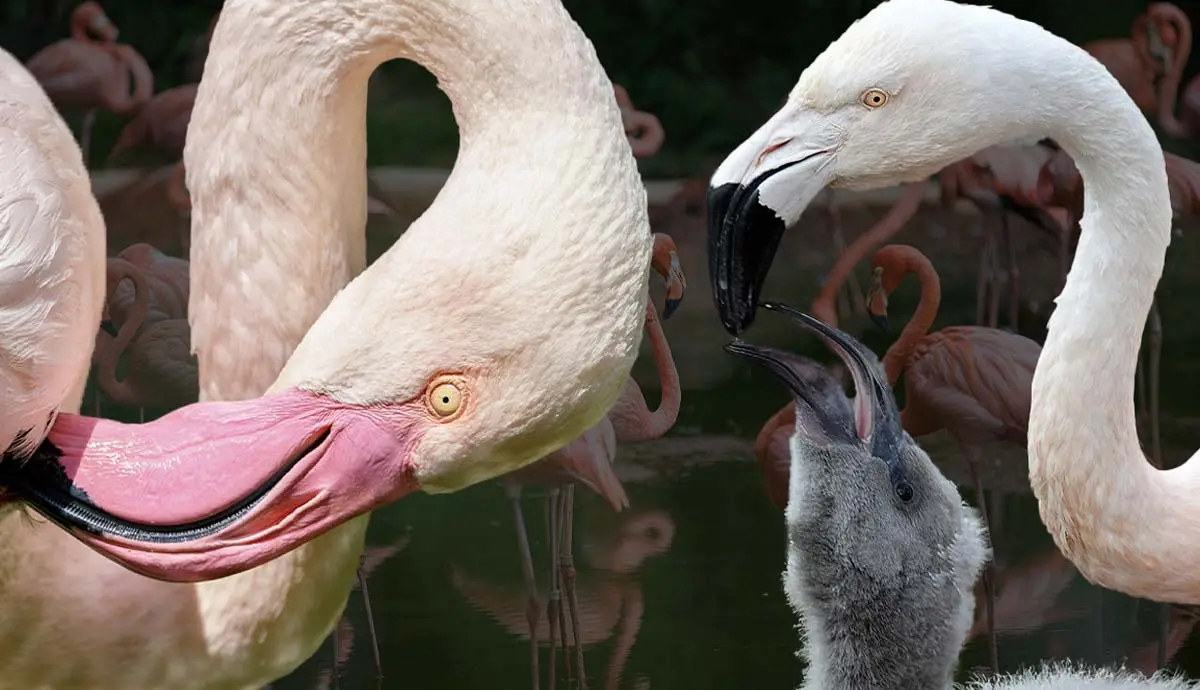When you think of flamingos, what comes to mind? Likely, you picture their bright pink feathers, long legs, and incredibly flexible necks. Join me as we uncover the truth about these majestic birds.
8. The Next Generation
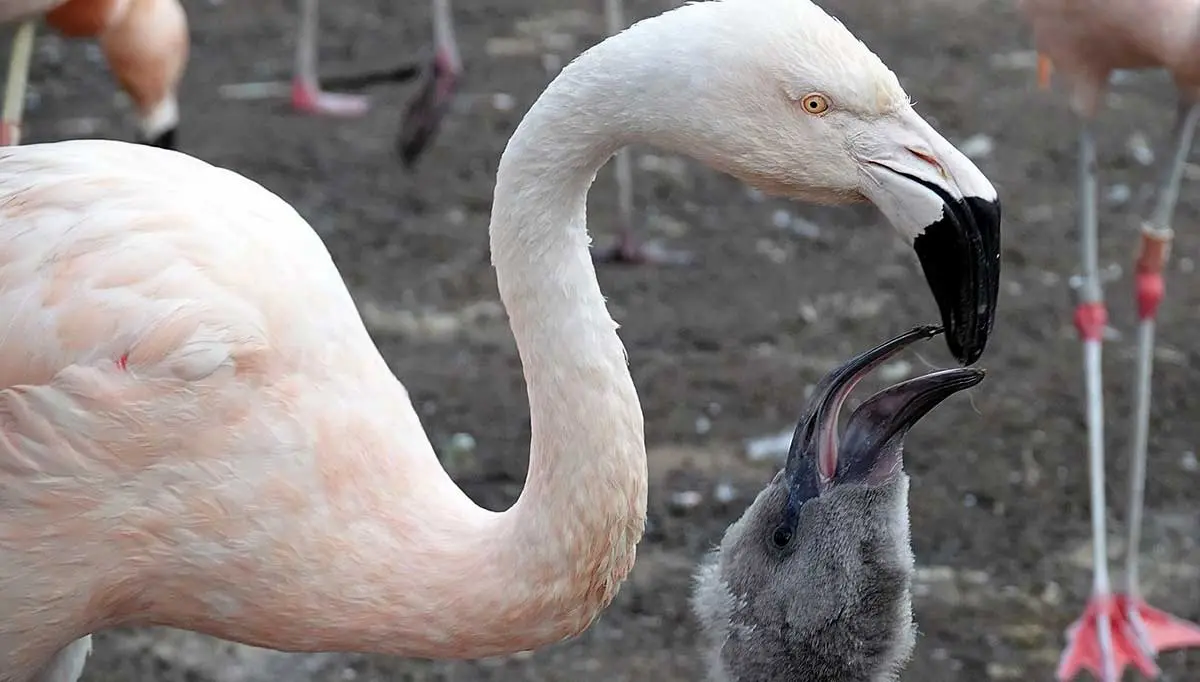
What’s grey and white, fluffy, and smaller than a baseball? The answer is a newly hatched flamingo! The gorgeous plumage these wading birds are known for doesn’t appear during the first few years of life. Another surprising difference between adults and young flamingos is that their beaks start out straight. They only develop their signature curve around the same time the pink feathers grow in.
Did you know that both flamingo parents provide protection for their eggs? They build a secure nest out of mud to keep their incubating baby from being carried away in a water current. Mom and Dad take turns feeding their bundle of joy and send it off to play with the other kids around five days after hatching. Like penguins, flamingos identify family members by the sound of their voices. The young birds return to their nests when the adults call out to come home for dinner.
7. Flamingos in Pop Culture
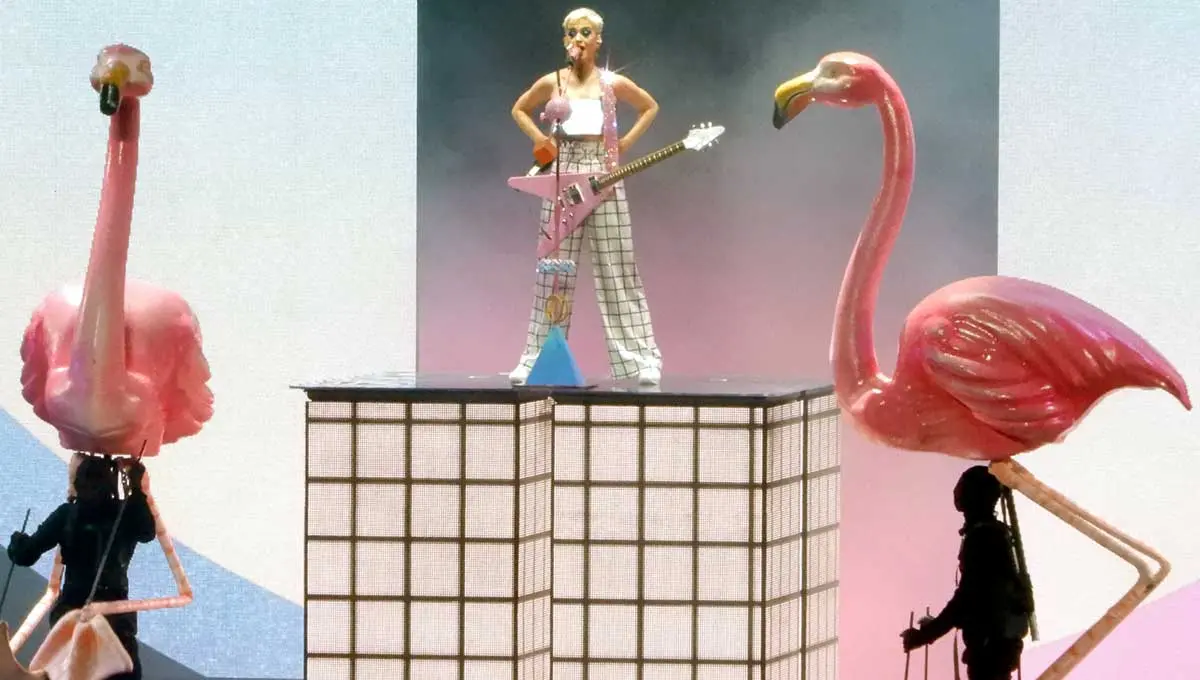
American singer Katy Perry, pictured above, performed with these larger-than-life plastic flamingos on stage. They dwarf the garden variety decorations you have probably seen at one time or another. Where did our fascination with flamingos as a pop culture phenomenon begin?
In the late 1950s, Don Featherstone designed the original pink flamingo lawn ornament for mass production. They sold like hotcakes, far surpassing anyone’s expectations at the time. In the early 1970s, John Waters’ movie Pink Flamingos breathed new life into the pop culture craze. Flash forward to the mid-1990s. Featherstone’s quirky creation earned him the Ig Nobel Prize for Art.
6. Along for the Ride

These beautiful birds have a wingspan of up to 60 inches. Flamingos fly a whopping 375 miles in just one night! They travel at the same speed you drive your car on most city streets. When flamingos fly during the daytime, they tend to maneuver as high as 15,000 feet in the air! As a general rule of thumb, flamingos prefer to fly at around 10,000 feet.
5. Let’s Make Some Noise
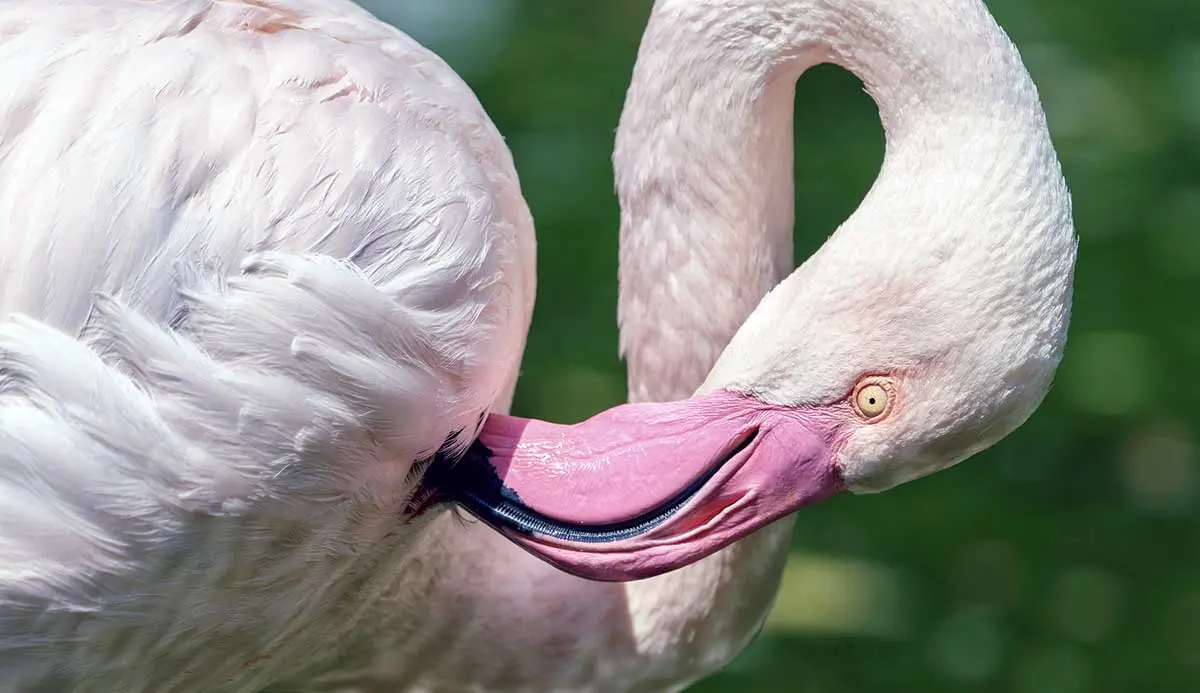
Did you know that flamingos can growl like dogs and cats? They can also grunt like pigs and honk like geese. Not all species sound alike, though! Each of the six different types of flamingos has identifiable sounds. Greater, Lesser, American, Chilean, James’s, and Andean flamingo species exist.
4. A Flamboyant Group
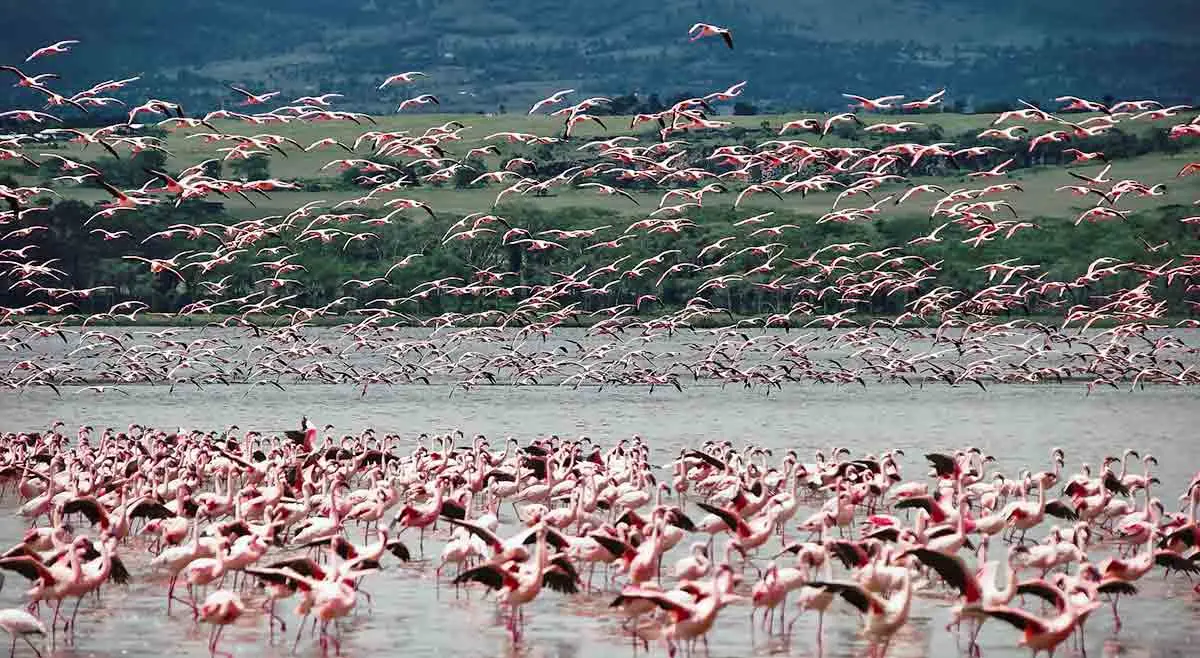
These brightly colored birds love to hang out with their family and friends. In fact, hundreds of flamingos gather at a time. Do you know what a group is called? It’s a flamboyance!
When it comes to mating, these massive colonies split off into much smaller branches. Only between 15 to 50 flamingos create a breeding group. Once a male and female pick each other to bond with, the happy couple is choosy about how close their neighbors’ nests are.
3. Colorful Plumage
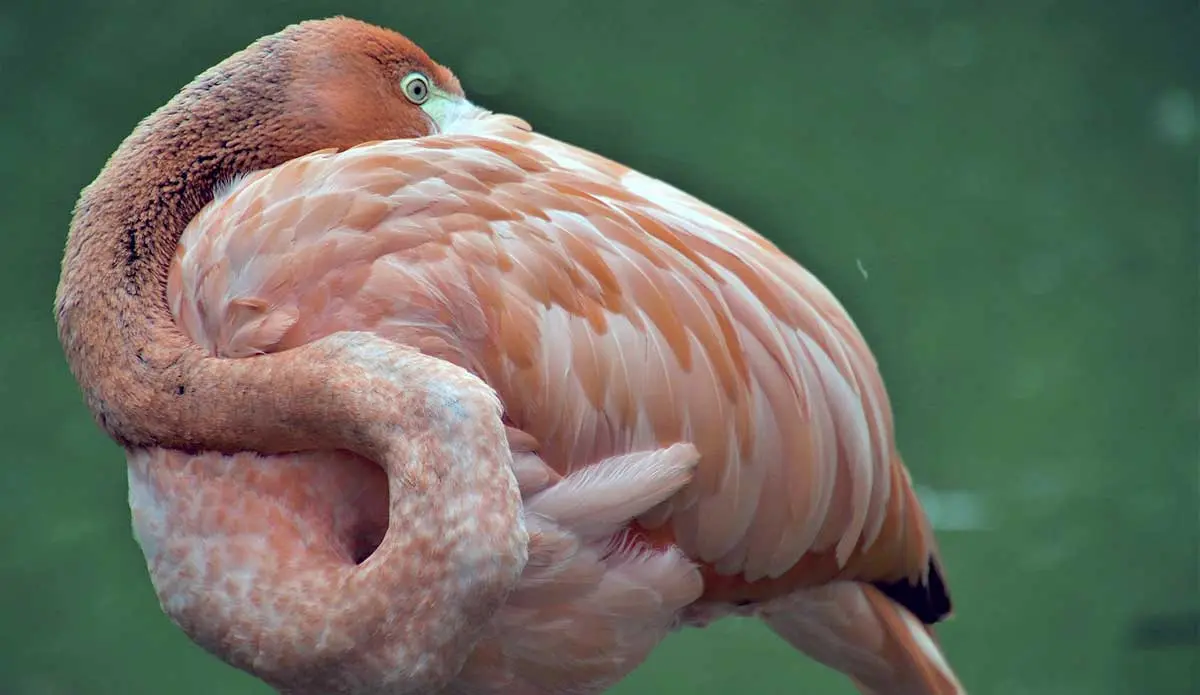
Their feathers range from pale pink to bright reddish pink. “Flamingo” comes from the Spanish word for “flame-colored,” “flamengo.” The Lesser Flamingo calls Africa and India home. This species is both the smallest and the lightest-hued. Their feathers are such a delicate shade of pink that they appear nearly white in places.
2. Stirring the Pot
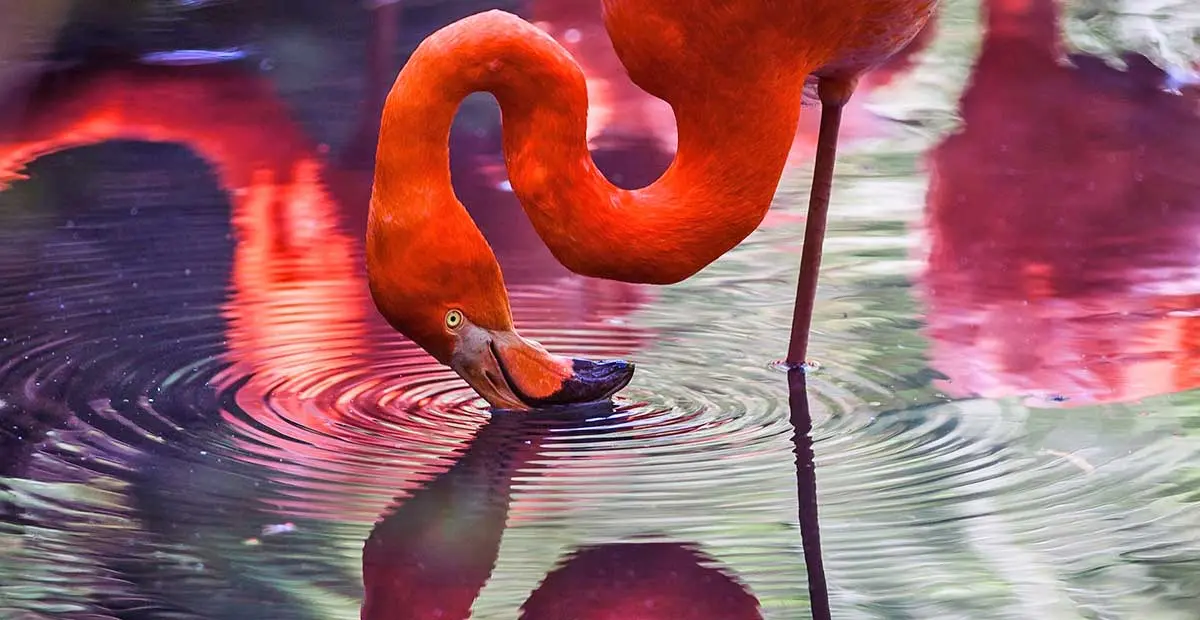
How do flamingos get their signature color? Interestingly, their feathers are pink because of beta-carotene in the food they consume. Flamingos stir the water with their heads or feet to find tasty treats like shrimp, fish, and algae!
Unlike most birds, they open and close their beaks by moving both their upper and lower jaw. Then, food is scooped up with their heads turned upside-down! Another unique trick to these creatures is their ability to separate muck from their meals. Flamingos’ beaks are designed with a sieve-like adaptation that helps them remove mud and other gunk from their food.
1. Balancing Act
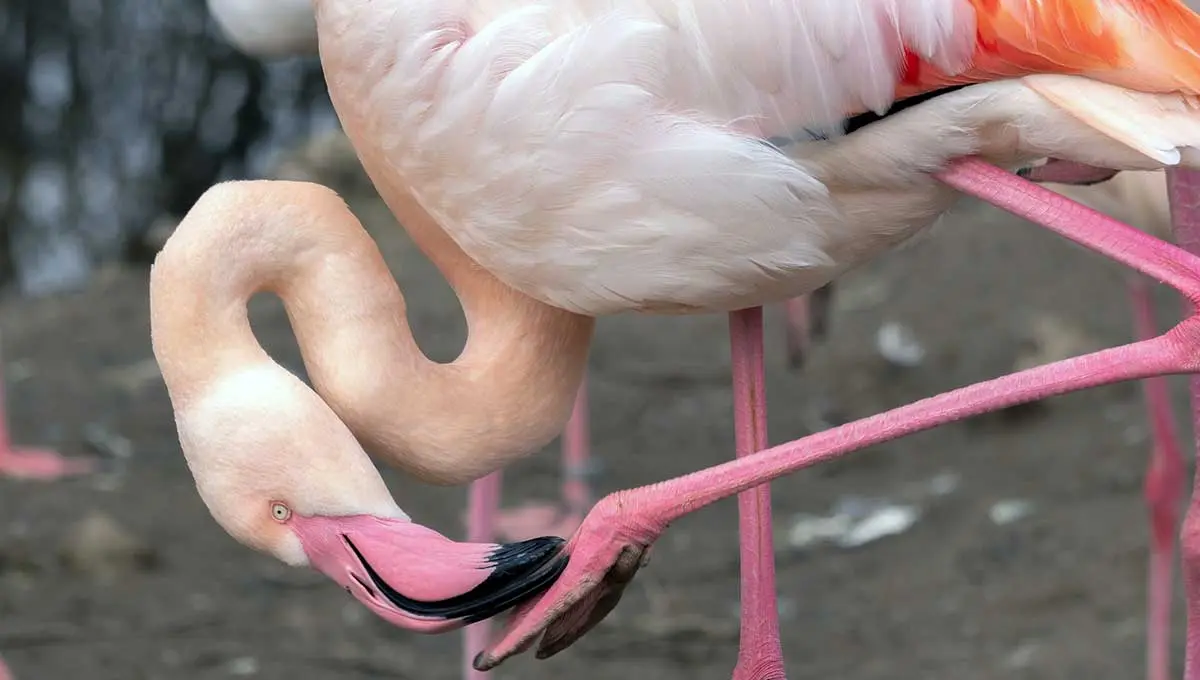
Have you ever played the game “Simon Says?” One of the quintessential commands given is to hop on one foot. Hands down, flamingos reign supreme when it comes to balancing acts. These vibrant creatures are well known for their ability to maintain their posture.
Scientists are unsure why flamingos stand on one leg. It might be to conserve heat, rest the opposite leg, or something else entirely.
